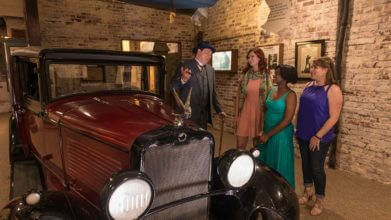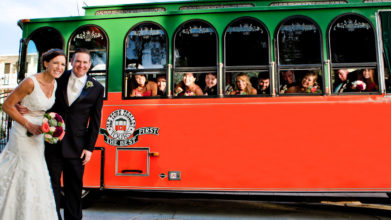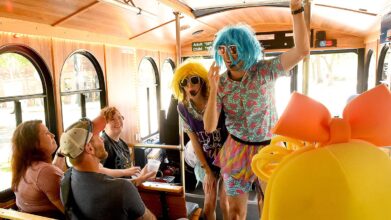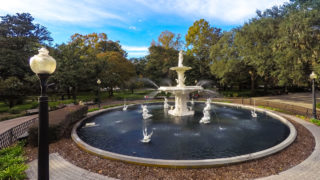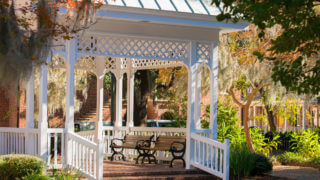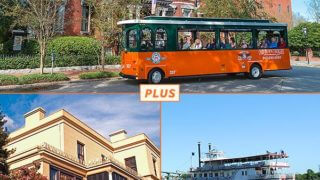Things To Do In Savannah’s Victorian District
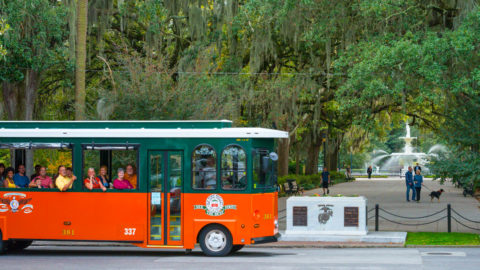
Victorian District
With more than 20 city squares filled with monuments, mansions, museums, churches and famous forts of the Revolutionary & Civil War eras, Savannah boasts the largest National Historic Landmark District in the United States. Just a stone’s throw from this exceptional locale is Savannah’s Victorian District. Bounded by Martin Luther King Boulevard and East Broad Street, Gwinnett and Anderson Streets, the Victorian District represents the city’s first suburb.
It’s home to some of the finest architecture in the South complete with whimsical, two-story residences adorned with gingerbread trim, stained-glass windows and other unique details.
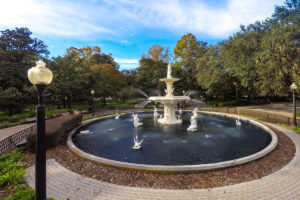 Forsyth Park
Forsyth Park
As you admire Savannah’s colorful history, take a stroll through Forsyth Park, the city’s largest and oldest park. The space occupies 30 acres and features walking paths, a café, children’s play area and Fragrant Garden for the Blind. The famous Forsyth Fountain was added to the park in 1858 and is a focal point of the park because of its size, majestic elegance and beauty. You’ll also find tennis courts, basketball courts and areas for soccer and Frisbee. Adults, youth, families and people of all ages come to see the sights, run, play and relax.
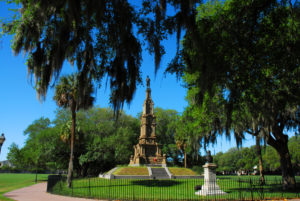 Historical Significance
Historical Significance
For those with an interest in history, Forsyth Park has more than its share. It was established in 1851 and named after Georgia Governor, John Forsyth. With over two centuries of military history, Savannah is also home to three war memorials that pay tribute to those who fought in the Civil War, Spanish-American War and Vietnam War. At the corner of Bull Street and Park Avenue, a large bronze statue mounted on a stone pedestal was erected in 1931 to honor the Georgia soldiers who served their country in the War of 1812. Also in the park is a Confederate monument honoring local Civil War veterans composed of Nova Scotia sandstone and designed by Canadian David Reid. There’s also a Vietnam Veterans Memorial in Emmet Park paying homage to the local men and women who served in the war.
Outdoor Performances
Outdoor plays and concerts often take place in Forsyth Park. Venture to the northwest corner for Hodgson Hall, a 19th-century Italianate Greek-revival building that houses the Georgia Historical Society.
Founded in 1839, the Georgia Historical Society is the oldest cultural institution in the state and one of the oldest historical organizations in the country. The society’s permanent collection contains more than four million manuscripts, 100,000 photographs, 30,000 architectural drawings, 15,000 rare and non-rare books and thousands of maps, portraits and artifacts.
Local Cuisine
As with any trip to Savannah, visitors must take time out of their busy day to enjoy the culinary creations of The Hostess City of the South. Make sure to check out Mansion on Forsyth Park, which boasts Forsyth Park Café, 700 Drayton Restaurant, Casimir’s Lounge and Bosendorfer Lounge.
There’s also Elizabeth on 37th on East 37th Street, which fuses coastal cuisine with Southern hospitality and has been named one of the top 25 restaurants in America by Food & Wine Magazine.
Accommodations
Savannah offers a variety of hotel options for travelers.
 King Tisdell Cottage
King Tisdell Cottage
The King-Tisdell Cottage is an African-American heritage museum named for its African-American owners, Eugene and Sarah King, and Sarah King and Robert Tisdell. This museum of African-American Savannah and the Sea Islands is owned and operated by the King-Tisdell Cottage Foundation, which also owns and operates the Negro Heritage Trail Tours and the Beach Institute on the corner of Price and Harris Streets.
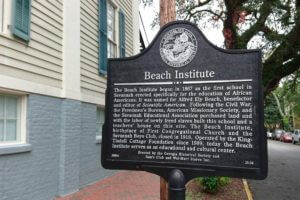 Beach Institute
Beach Institute
The Beach Institute houses the offices of the King-Tisdell Cottage Foundation Inc., the Ulysses Davis Collection, and frequent exhibits.
- Built in 1867 by the Freedmen’s Bureau and primarily funded by the American Missionary Association, named in honor of New Yorker Alfred E. Beach, Editor of Scientific American, who donated funds to purchase the site.
- Initially 600 students enrolled. The school had 9 female teachers and a male principal. Most of these teachers were Caucasian. Tuition was $1 per month in 1873.
- In 1874, The Beach Institute was turned over to the Savannah Board of Education and became a free public school for African American children.
- In 1878, the school was damaged by fire, rendering it temporarily unusable. The American Missionary Association took this opportunity to resume control of the building and the educational program as they were intent on securing a higher grade of instruction than the Board of Education in Savannah thought it prudent to furnish.
- In 1917 the Savannah Boys Club rented one small room in the basement of The Beach Institute as its weekly meeting place. The activities and fame of this club extended and expanded until it occupied the entire basement of the building and utilized every weekday evening with its educational endeavors on behalf of under-privileged African American boys.
The Beach Institute closed in 1919. Enrollment had significantly declined due to the opening of Savannah’s first African American public high school on Cuyler Street, as well as the prevailing popularity of the Georgia State Industrial College at Thunderbolt, which opened in 1891.
Savannah Old Town Trolley Tours
Old Town Trolley is a convenient way to explore Savannah’s Victorian District while maximizing your vacation time. Explore the largest National Historic Landmark District in the US with us as we guide you across Forsythe Park and all of its attractions. With stops throughout Savannah, you can hop on and off at the sites you want to visit and learn about the rest during our fully narrated 90 minute historic sightseeing tour. Find the lowest price and money-saying packages by purchasing tickets direct through our website.

